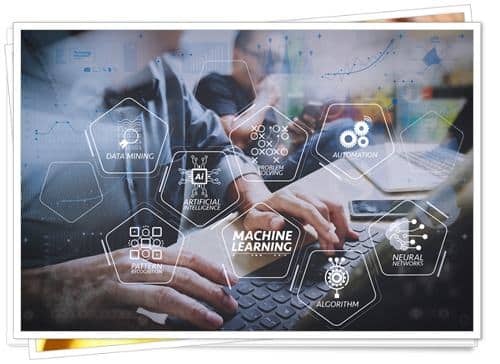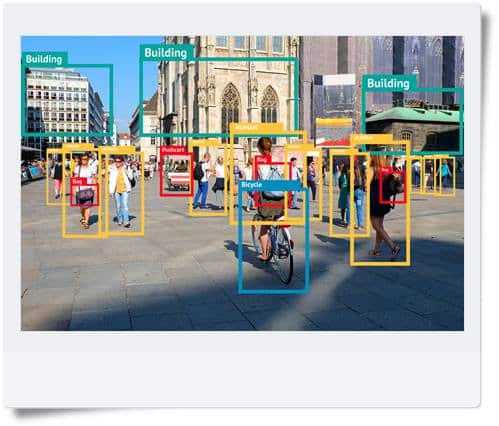
In today’s rapidly evolving technological landscape, artificial intelligence (AI) and machine learning stand at the forefront of innovation. Data serves as the lifeblood that fuels their growth.
Video content holds a unique and unparalleled richness, complexity, and depth among the myriad forms of data surrounding us. It makes for an invaluable treasure trove for AI applications across countless industries.
To leverage the full potential of video data, it’s essential to understand the process of video labeling. This article will explore its intricacies, highlighting the importance of an effective video labeling tool and data annotation in generating accurate, valuable insights from this form of content.
What Is Video Labeling, And How Does It Work?

At the heart of video labeling lies a process that identifies and tags many elements within a video, encompassing objects, actions, and scenes.
This intricate process transforms raw video content into a structured data format primed for utilization in machine learning and AI applications. When executed effectively, it lets computers recognize and decipher patterns in videos, paving the way for creating cutting-edge algorithms that can autonomously interpret and analyze video data.
Data preprocessing is the first step. This crucial stage involves meticulously deconstructing the video into individual frames, the foundation for the subsequent labeling process.
Depending on the specific AI application, the video may undergo additional transformations. These include applying filters, resizing, and converting to alternative formats to ensure compatibility.
What Is Data Annotation?
Data annotation is pivotal in video labeling, ensuring the labeled information is accurate, consistent, and relevant.
It’s usually done manually review by human annotators, who assess the quality of the labels and make necessary corrections or adjustments to ensure the highest possible accuracy.
The Video Labeling Process
A crucial component of the video labeling process is the video labeling tool, which streamlines the process and improves the accuracy of the output.
The best ones come with features like automatic object detection, tracking capabilities, and semantic segmentation. They allow users to efficiently label video content with minimal manual intervention.
Once the video frames have been preprocessed and imported into the video labeling tool, the actual process begins. It typically involves three key steps:
- Object detection: It involves identifying and tagging individual objects within the video frame, such as people, animals, or vehicles.
- Object tracking: The identified objects are tracked throughout the video to determine their movement and interaction with other things.
- Action recognition: It involves tagging specific actions or events in the video, such as walking, running, or jumping.
These steps make up the critical points of video labeling. Different software providers compete to offer the best possible ways to accomplish them.
Video Labeling Workflow
Quality is crucial in this process. One innovative approach to enhancing the quality of labeled data involves incorporating iterative feedback loops into the video labeling workflow. This enables human annotators to review and correct the output generated by machine learning algorithms, fostering a collaborative, dynamic process that continually refines results.
Video labeling can be time-consuming and labor-intensive when dealing with large volumes of data. But rapid advancements in AI and machine learning have ushered in a new era of automated video labeling solutions, dramatically reducing the time and effort needed to produce output.
These cutting-edge solutions harness the power of advanced algorithms and deep learning techniques, enabling the automatic identification and tagging of objects, actions, and scenes within the video content with minimal human intervention.
Quality control, an indispensable element of video labeling, ensures accuracy and reliability. This crucial process combines diverse validation techniques, ensuring the output aligns seamlessly with the utmost precision.
Where Can You Find It Being Used?
Video labeling has found numerous applications across diverse industries, some of which include:
- Autonomous vehicles: Video labeling is instrumental in training self-driving cars to recognize and respond to various objects, events, and conditions on the road, such as pedestrians, traffic signs, and weather.
- Security and surveillance: Video labeling enables the development of smart surveillance systems that identify and track potential security threats, such as unauthorized individuals, suspicious activities, or unattended baggage.
- Healthcare: In the medical field, video labeling can train AI algorithms to analyze medical imaging data, such as X-rays or MRIs, and identify potential health issues, like tumors or fractures.
- Entertainment: Video labeling is employed in developing AI-powered video editing tools, automatically detecting and categorizing specific scenes or actions, making it easier for editors to create engaging content.
- Sports: Video labeling can be used to analyze sports footage, enabling the development of AI-driven coaching tools that can identify and track player movements, assess performance, and provide insights into improving strategies.
It’s essential to recognize its transformative impact on these fields. This tech could be at the forefront of driving innovation, providing valuable insights and enabling more efficient, accurate, and sophisticated applications.
A Game Changer In Media Use
Video labeling may be the key to unlocking the potential of video data in the ever-evolving spheres of AI and machine learning. As this tech’s journey continues, staying informed on the latest trends and applications becomes increasingly essential, ensuring we can fully harness its potential.
Leave a Reply
You must be logged in to post a comment.